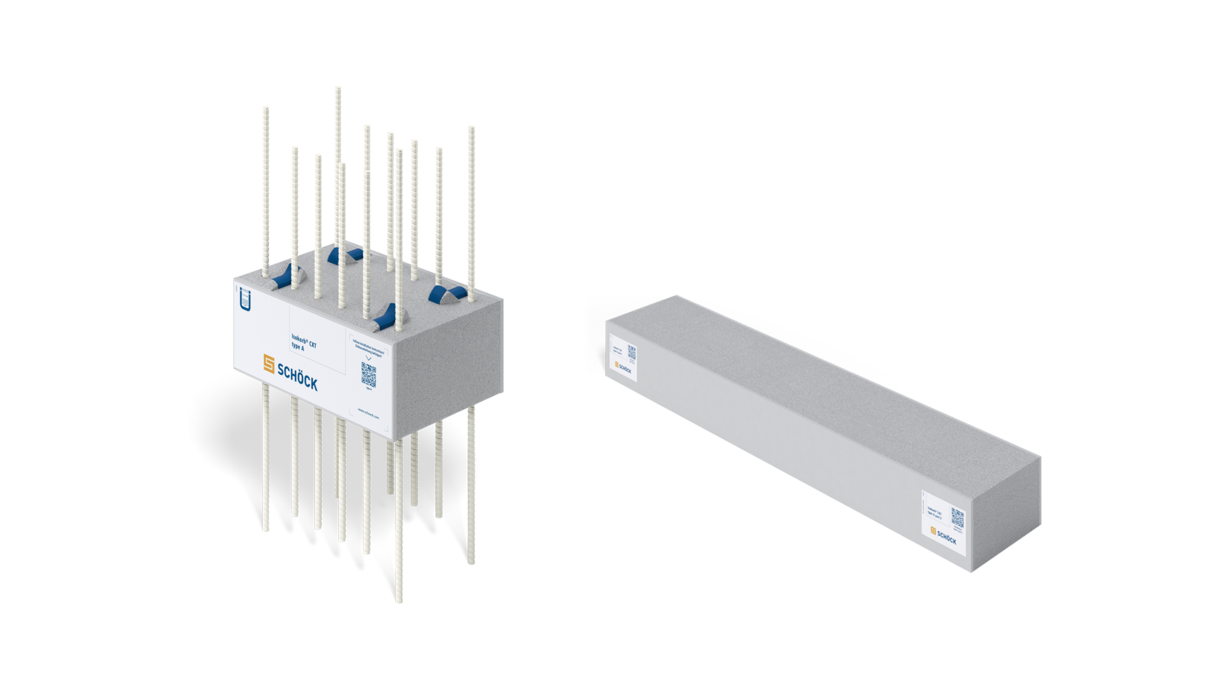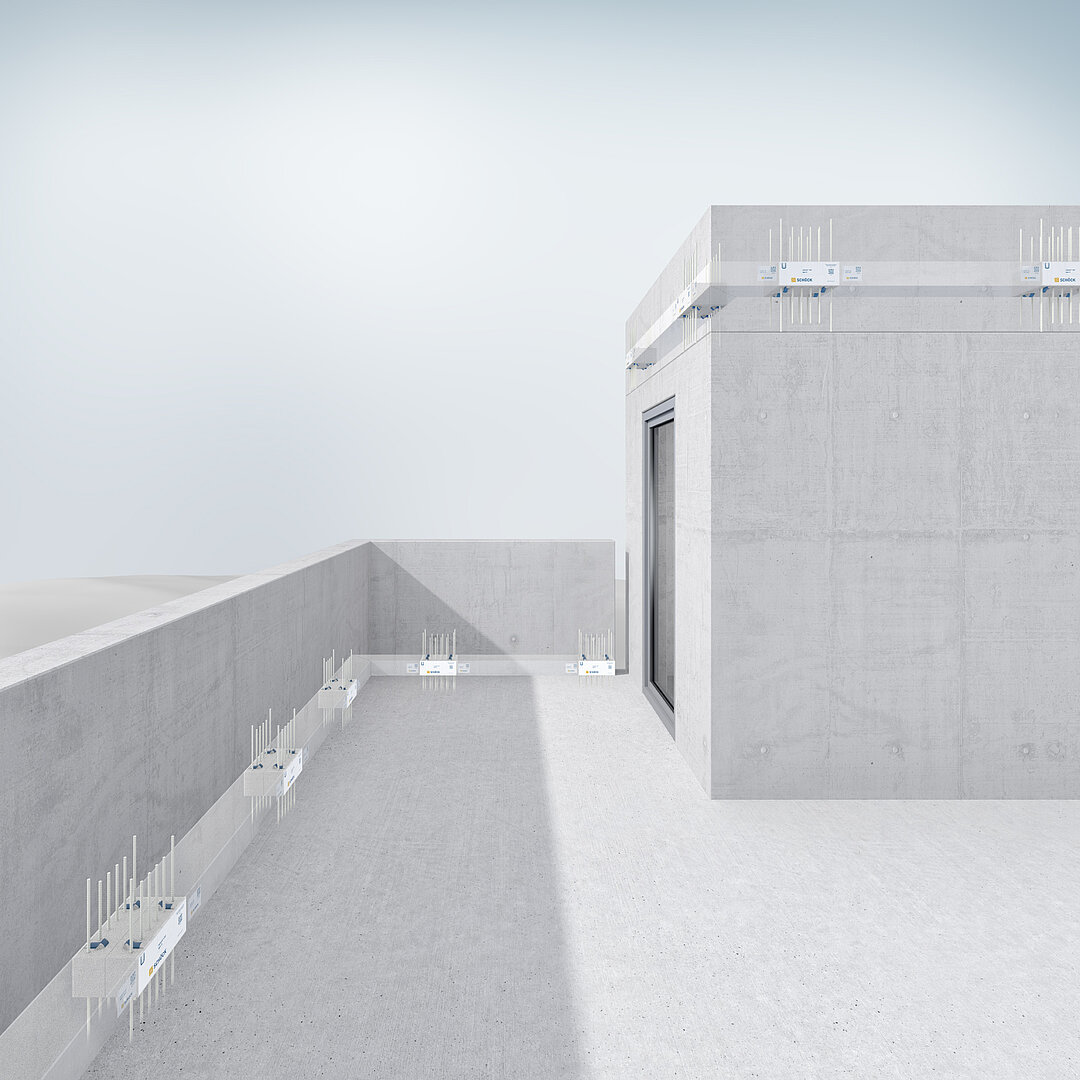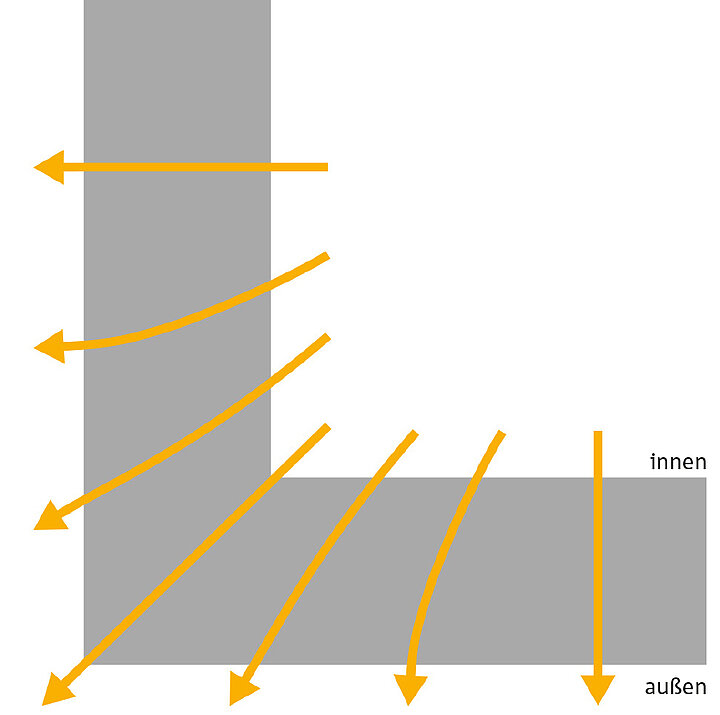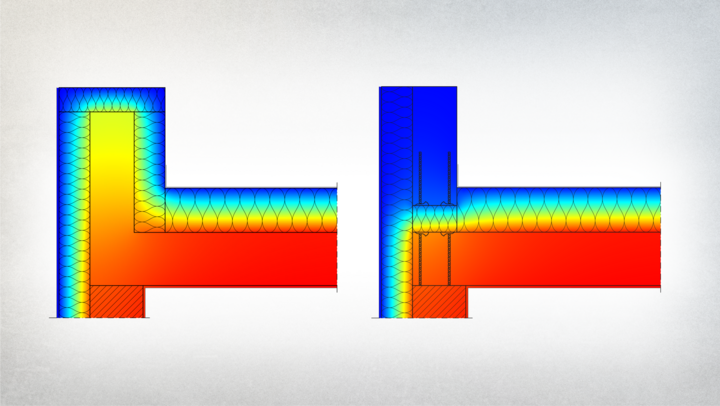Schöck Isokorb® CXT type A
Schöck Isokorb® CXT type A for parapets is a sustainable alternative to wrapped parapets. It transfers moments and shear forces resulting from an identically directed action. In addition, it transfers compression forces.
Safe execution of the entire connection
Schöck Isokorb® CXT type A is a point connection. In order to execute the entire connection safely with regard to building physics and fire protection, the combination of Schöck Isokorb® CXT type A (left) and the thermal insulation element Schöck Isokorb® CXT type A part Z (right) is strongly recommended.
read more
For precast parapets
The Schöck Combar® precast assembly support is available for the planning and installation of prefabricated parapets.
It can be used to install Schöck Isokorb® CXT type A to achieve efficient and permanently thermally separated parapets made of precast elements and in exposed concrete.
Benefits
- Efficient thermal insulation
The efficient alternative when compared to wrapped parapets - Reliable planning
Schöck Isokorb® CXT type A has a general technical approval from the DIBt - Freedom of design
For streamlined components, also parapets in exposed concrete - Economical and time-saving
Larger terraces increase the value of the residential unit. The quick and easy installation accelerate the construction process compared to previous solutions - Durable and free of maintenance
The installation of railings, cover plates, or cap flashings can be done without penetrating the insulation and with no additional sealing
- Simple and fast installation
No auxiliary constructions are needed, can be set up directly on the slab formwork, element slab or masonry - Installation with flexible installation time
Can be installed both before and after the slab reinforcement has been laid and in fresh concrete. In addition, on-site reinforcement can be dispensed with
- Precise height compensation
The longitudinally adjustable Combar® rods ensure precise height compensation
-
Compliance with fire protection requirements
In case of fire protection requirements, Isokorb® CXT type A in combination with Isokorb® CXT type A Part Z offers reliable fire protection REI30 over the entire connection line.
- Standardised
Available in standard widths of 150 to 280 mm, other widths available on request
Worth knowing
The flat roof is a common design element in modern living spaces. An elegant parapet offers the final touch. Not only does the aesthetic comply with the requirements of contemporary building, but parapets also prove to be extremely practical when it comes to high-rise construction and maximising the use of the building's interior space. Especially in urban areas, the flat roof is increasingly being perceived as a usable surface: Green roofs, urban gardening and roof terraces as amenity areas offer real added value for properties in urban areas.
The parapet as part of a building should be optimally designed in many aspects:
- Attractive streamlined parapets with an efficient thermal separation
- Gain on space on the flat roof by reducing the thickness of the parapet (no wrapping insulation needed)
- Reliably planning thanks to the technical approval of the German DIBt
In practice, parapets are often thermally insulated, but still designed with insulation on all sides. The central aspect here is the significantly better insulating performance of thermal separation. Since parapets run along the entire edge of the building, similar thermal issues arise to those with balconies - the cooling fin effect: a large external surface of balcony and parapet favours the heat transport through the thermal bridge. In addition, parapets are additionally connected to the external corner between wall and ceiling. This leads to a further geometric influence due to the external corner, which has a negative impact on the surface ratio inside to outside. The connection of the parapet to the wall or slab also represents a material-related thermal bridge, similar to the balcony.
The effects of thermal bridges can be summarised as follows:
- Risk of mould growth
- Health hazards (allergies, etc.)
- Risk of condensation
- Increased energy loss
- Deterioration of living comfort
When it comes to projecting connections on buildings, the issue of thermal separation is often a concern. Currently, there are two competing options for insulating parapets. One option is “wrapping", which involves installing insulation material all around the building component. The other option is “thermal separation”, using a structural thermal break.
The connection of the parapet is a typical example of a constructive thermal bridge. The thermography image on the left shows a connection with insulation on all sides and the resulting heat losses. On the right side, the thermography image displays the heat flow of a parapet connection with thermal separation.
The different colours represent changes in temperature, with heat always flowing from warm (red) areas to cold (blue) areas. In the picture on the left, it is evident that the parapet experiences significant thermal energy loss, leading to a low internal surface temperature. This results in a considerable amount of energy being wasted since the parapet is always part of the heated space. Conversely, with the parapet connection using a thermal break like Schöck Isokorb®, very little heat is dissipated. The difference in heat flows is clearly visible. With Schöck Isokorb® there is a distinct separation between the parapet (blue) and the heated space in the building (red), resulting in visibly higher interior surface temperatures.
What are the advantages of using a thermal insulation element?
- The parapet is no longer part of the heated building volume
- The parapet is only connected at specific points
- The insulation level between these punctual connections can be carried out undisturbed
- There is no need for expensive, high-maintenance and damage-prone wrapping




